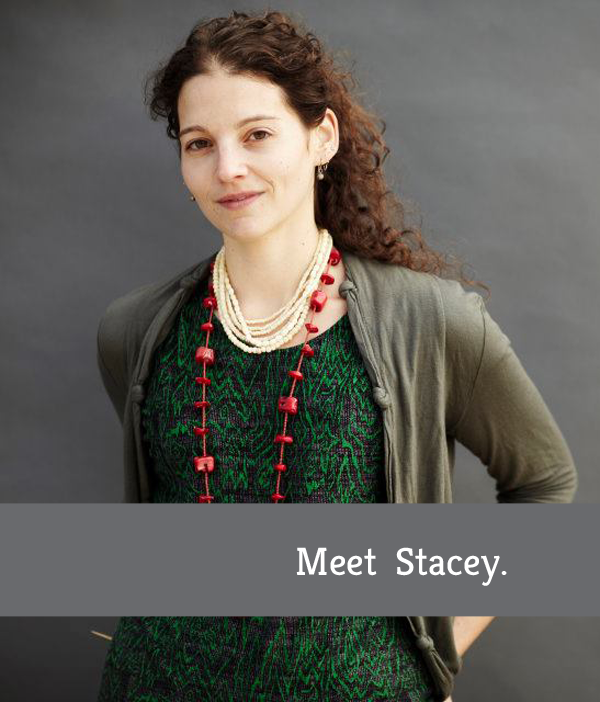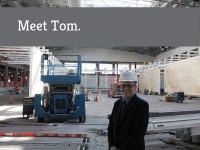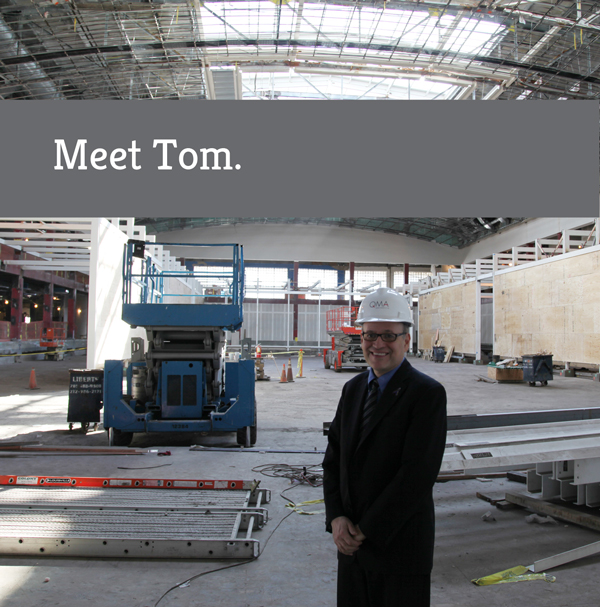 My name is Stacey Ornstein, and I think I hold a lot of titles. I’m president of the Astoria CSA, or community supported agriculture. We connect our farm to the local community and we do a lot of educational programming, free to the community. In my professional life, I teach cooking to elementary school kids at an after-school program and through a couple of non-profits in the city.
My name is Stacey Ornstein, and I think I hold a lot of titles. I’m president of the Astoria CSA, or community supported agriculture. We connect our farm to the local community and we do a lot of educational programming, free to the community. In my professional life, I teach cooking to elementary school kids at an after-school program and through a couple of non-profits in the city.
I’m originally from the Chicago area and I came to New York City, oh, a lot of years ago. I came to New York City to go to school and now I live in Astoria, Queens. So I’ve been here for about fourteen years now.
Astoria is my favorite neighborhood. I do a culinary food tour as a little fun side project in Astoria. The tour that I do is a wider Mediterranean; we do Bosnian, Italian, Greek, and Egyptian, which I think is really cool because they’re some of the lesser-known ethnicities in Astoria. You have to love Queens for its ethnic diversity and food culture.
I have my masters in education, and I worked on art education predominantly in my studies. When I graduated, I was working in a couple of art education non-profits.
I worked with high school students, and I watched the foods that they were bringing in as snacks, and what they were calling their lunches, and it scared me.
Growing up, I loved junk food. But when I started spending my own money on food and realizing that I wasn’t getting full off of that, I started making healthier food choices on my own. When I saw that kids were not doing the same, it scared me. That was my ‘Aha!’ moment.
I love kids because they’re really not afraid to tell you what’s on their minds. They are really honest with you, and if they don’t like something or they think something is boring, they’re going to tell you or they literally go to sleep on the table in front of you.
They’re much more likely to try good food when they know where it comes from, when they’ve had a hand in making it. Something green isn’t as scary when you pull it apart and understand its components.
Beet gnocchi is really cool because it’s a hot pink fuchsia color. Kids love it because I talk to them about beets. If you can’t get your kid to eat beets, you tell them that they will pee pink and potentially miss school if they eat enough beets. Every kid will be chowing down on the beets.
My favorite is anything that has a gross-out factor tagging along with it. I like working with yeast a lot, and doing breads, because they love the science of the yeast. They say they can hear it burping and see all of the gasses coming out. You sort of wish you had that child’s vision, watching bread rise, and being able to hear it burp.
I was leading a green market tour for some fourth graders a couple years back. There was one student who told me he had never had an apple before, a fresh apple. That was a scary moment. It made me realize that things still need to be done.
I’m obsessed with food, and there are so many foods that are all about New York. I support my farm in a winter share and a summer share, so I’m eating local about 90% of the time.
Eating locally, there’s so many different ethnicities that you can play around with, and cook and eat.
Mustard is an awesome, cross-cultural thing. In my community garden, we’ve got people from so many different countries who have different food memories associated with it. We have a Bangladeshi family who talks about having a mustard farm back in their home country. My grandmother was Latvian and she talks about making mustard, which is just vodka and mustard seeds, and maybe some horseradish for spice. However, once you add vodka and mustard seeds together, I don’t know if you need any extra spice. But it definitely clears your sinuses.
Something that drives me everyday is hearing children’s attitudes change. In the beginning of the year, they see something green on the table and they pretend to convulse because they don’t want to eat the green thing. This week, we’re making a green soup with peas and asparagus and they think it’s awesome and they’re coming back for seconds and thirds. That definitely motivates me to keep going, when they’re no longer putting up a fight to eat something green.
The connections that you can make working locally and when you get involved with a community are really amazing. You start to hear people’s stories and you really start to understand people. It makes the city seem smaller and more comfortable.
I have this cantaloupe that was originally in some heirloom seeds that I bought. That cantaloupe crossed with another cantaloupe. It’s turned into the most amazing cantaloupe ever. Every year, I collect seeds from one of the cantaloupes. I take those seeds and packet them, and give some of these cantaloupe seeds to people in the garden. It’s really exciting to have something that you’ve created, pass it along to another gardener or another member of the community, and that they are then going to take the plant and sustain themselves with it. It’s an amazing cycle, saving the seeds and passing the seeds on.
Allergic to Salad is my newer blog that chronicles my life working with elementary school kids, teaching them cooking. It came about because earlier in the year we were making something that involved spinach and green things, and I set out a platter of things that we were working on in class. So there was a lot of green stuff that we were working with, and I had a student who convulsed on the floor and said that she was allergic. I said, “You haven’t even eaten anything and you haven’t even touched anything.” And she stood up and said, “I’m allergic to salad, so I can’t eat anything today.” So I said to her, “I’m really disappointed, because next week we’re making a chocolate salad. Looks like you’ll have to sit that one out also.” She said, “Oh, no, I’m not allergic to salad anymore. Just this kind of salad.” So that’s where the name comes from, Allergic to Salad. It’s a combination of ‘Kids Say the Darndest Things’ and my life working with elementary school students.
There was another instance where we were working with butternut squash and I talked about how butternut squash is like the brother to the pumpkin. As we started cutting up the squash, one of my students started crying because he said that we were killing the brother. But later he said that eating the brother was pretty good. I have some twisted kids, I guess, and that makes it more fun to cook.
I hope one of my biggest contributions was helping to save my community garden, which was on the brink of being turned into—well, I don’t know what it was on the brink of being turned into. That was a scary moment. So, in my own community, that’s something that I’ve held onto and have made a connection with.
There are so many amazing community gardeners and local activists around the city that are really inspiring. I think that all of those little projects are really inspiring when you hear about them and when they come to light. Every day, I’m re-inspired by people around the city when I hear some of the projects that people are working on. It’s not necessarily anything in the food world. Anything that really connects people to their community and to each other is amazing. That’s inspiring to me.





